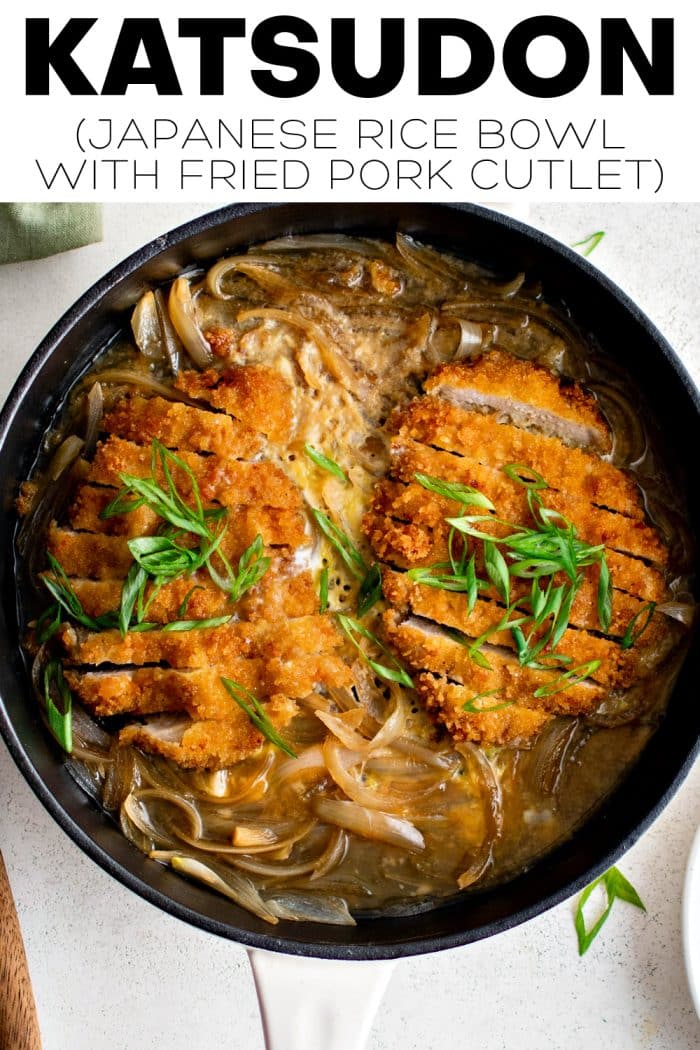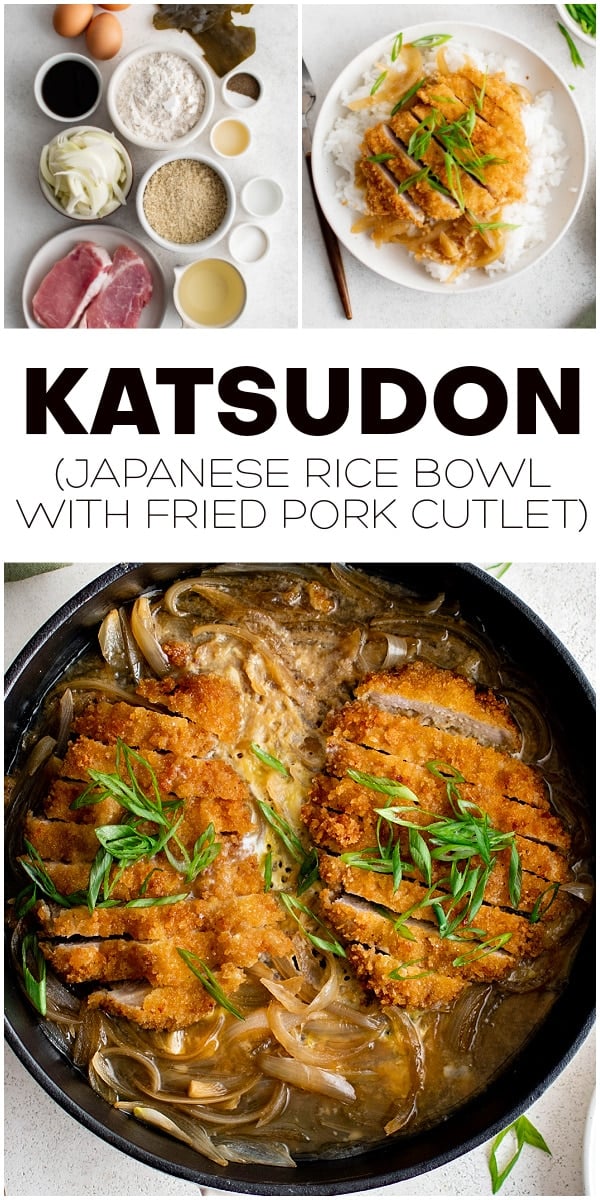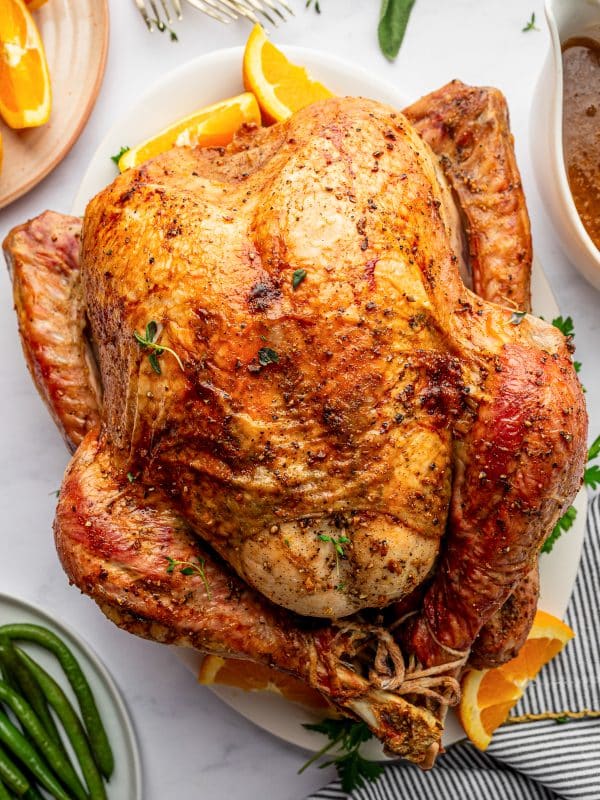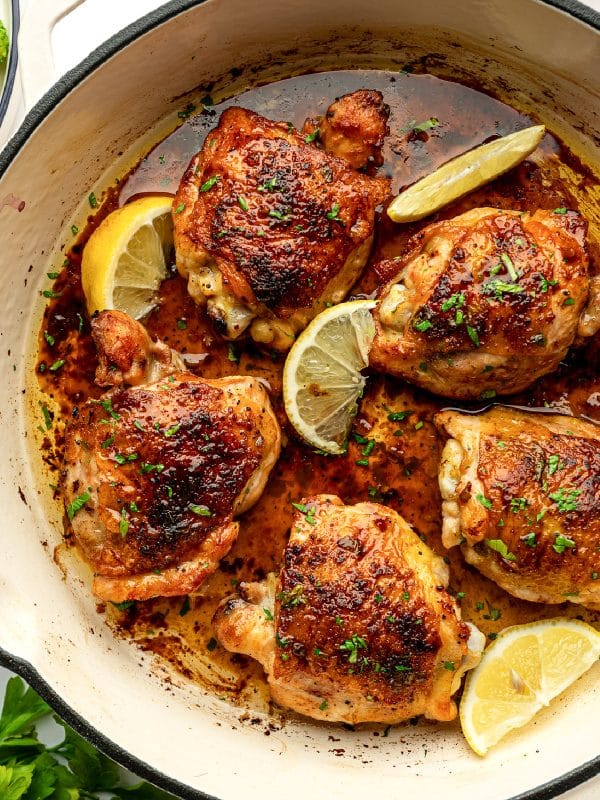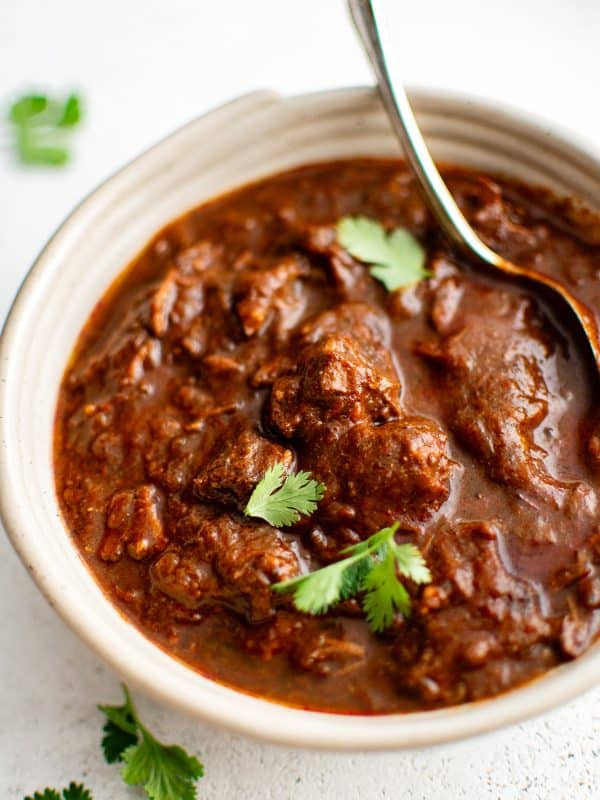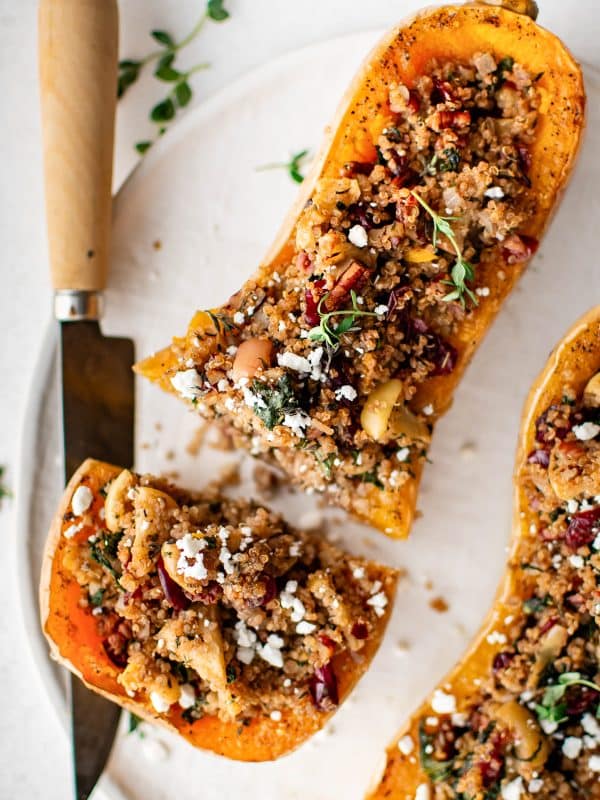This post may contain affiliate links. See my disclosure policy.
Katsudon (カツ丼) is a popular Japanese rice bowl made with tonkatsu (deep-fried pork cutlet), egg, sautéed onions, and rice in a sweet and savory sauce. A delicious blend of textures and flavors, enjoy this hearty comfort food any day of the week with this easy recipe.
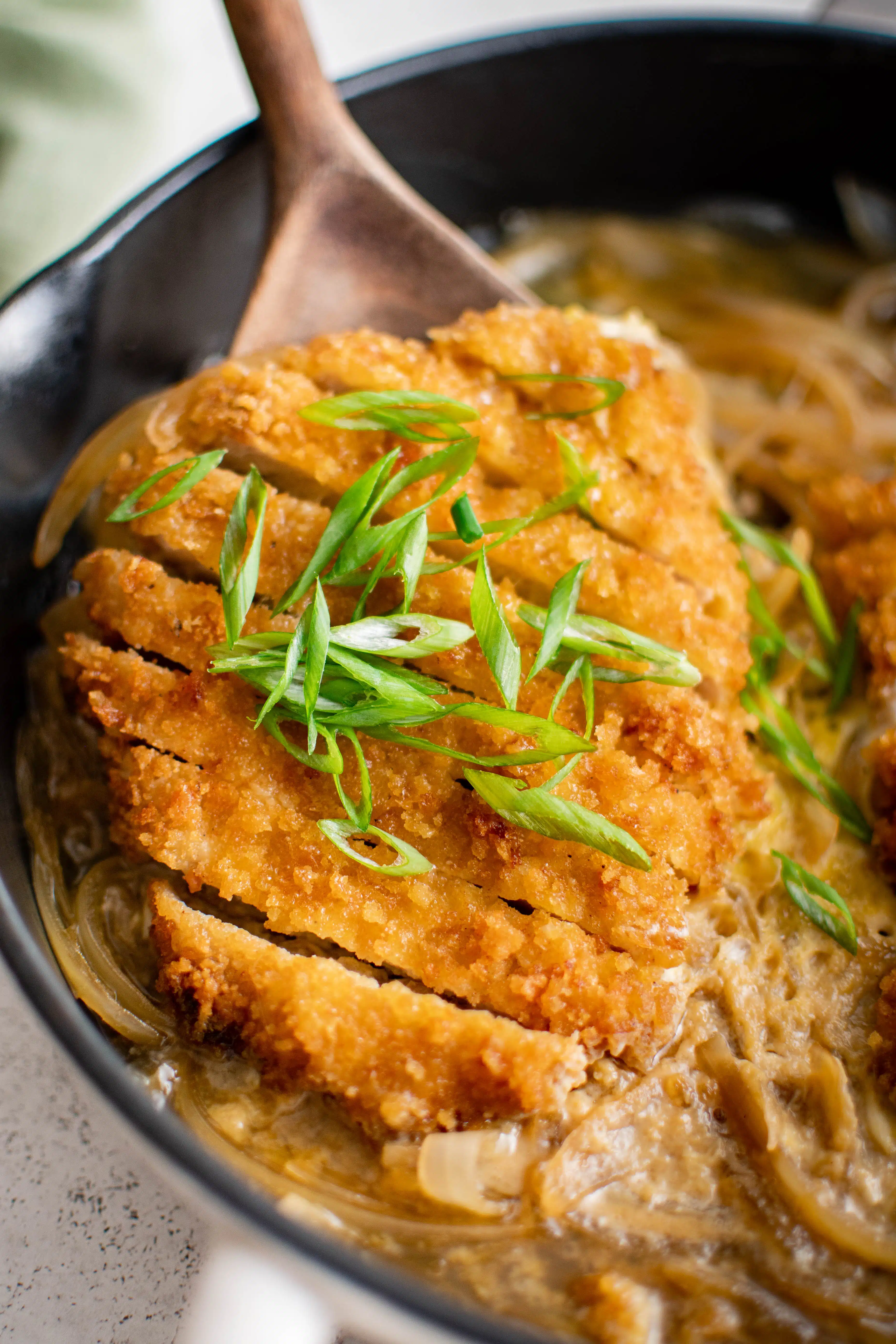
What is Katsudon?
Katsudon (カツ丼) is a Japanese dish made of a breaded, deep-fried pork cutlet (tonkatsu) placed over a bed of rice and covered with a sweet and savory umami-rich sauce made from dashi (a type of broth), soy sauce, mirin (a kind of rice wine), and sugar. This sauce often contains onions and egg, which are simmered together before being poured over the pork and rice.
Katsudon is a filling and flavorful recipe that is absolutely delicious. It is enjoyed both at home and at teishoku-ya (Japanese diners) and is one of many Japanese donburi (rice bowl dishes), where various toppings are served over rice in a large bowl.
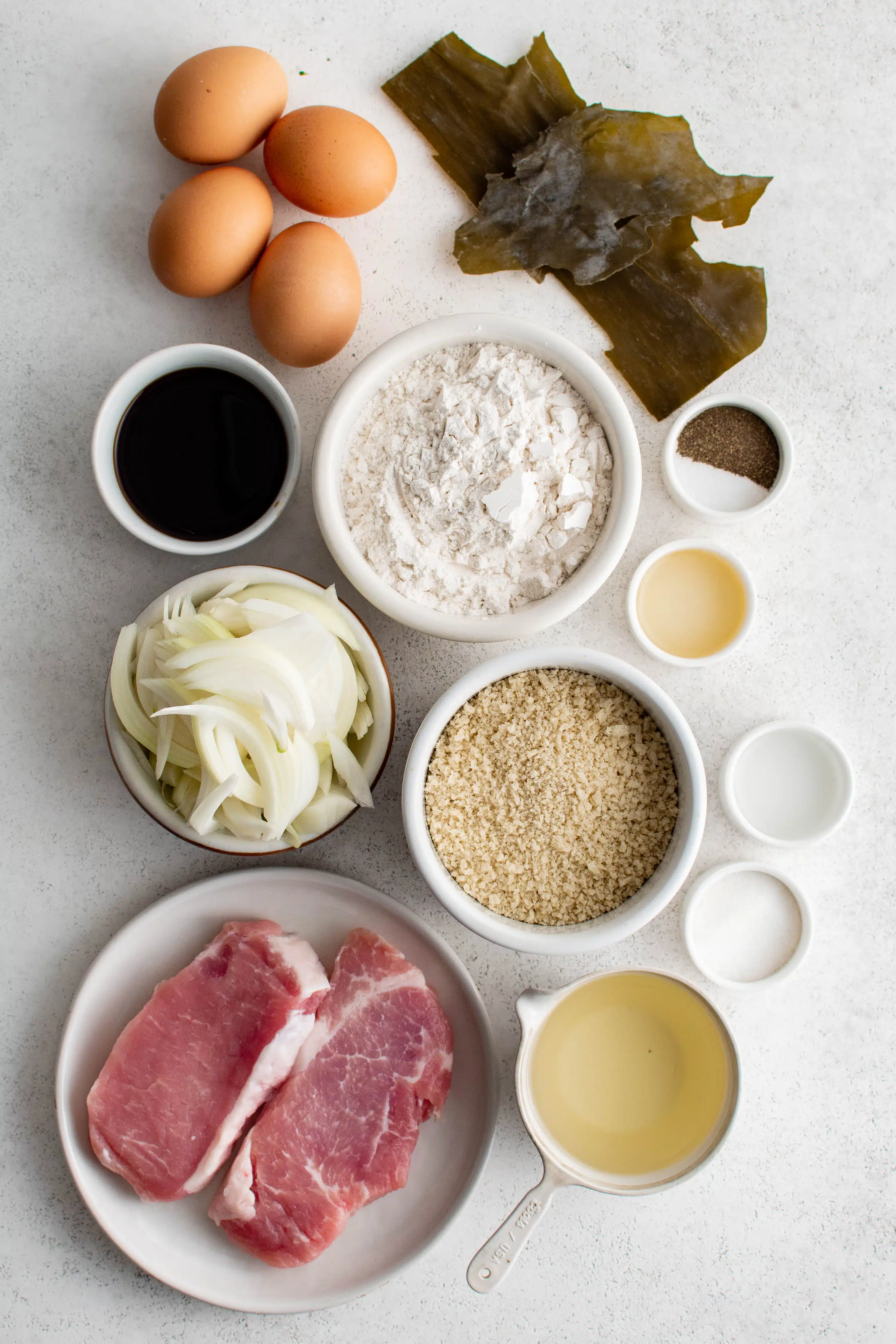
Ingredients
Scroll down to the recipe card at the bottom of the post for the full list and amounts of each ingredient.
For the Pork Cutlet (Tonkatsu):
- Pork Loin or Pork Chop: Pick boneless pork chops and tenderize them with a meat mallet until they are approximately 1/4 of an inch thick.
- All-purpose flour
- Eggs: Thoroughly whisked together, the floured pork cutlets are dipped into the eggs before being coated in Panko breadcrumbs.
- Panko Breadcrumbs: Panko are Japanese-style breadcrumbs known for their light and crispy texture after frying.
- Oil for Frying: For best results, you’ll want to use a neutral-tasting oil with a high smoke point, like vegetable or canola oil.
For the Sauce and Toppings:
- Kombu (昆布): A type of edible kelp and the primary ingredient needed to make dashi, a broth/stock used in many Japanese dishes. You may also use Instant dashi or dashi powder for convenience.
- Soy Sauce, Mirin, Sake, Sugar: Combined with dashi, these five ingredients make the sauce for the dish. It is sweet, salty, and rich in umami flavor.
- Onions: Thinly sliced, they are simmered in the sauce until softened.
- Eggs: Beaten and added to the sauce and onions, they create a soft, custardy texture.
- Steamed Rice: Served in a bowl, the rice forms the base of this dish. Short-grain rice, or sticky rice, is most commonly used.
- Green Onions, Scallions, or Mitsuba: To garnish.
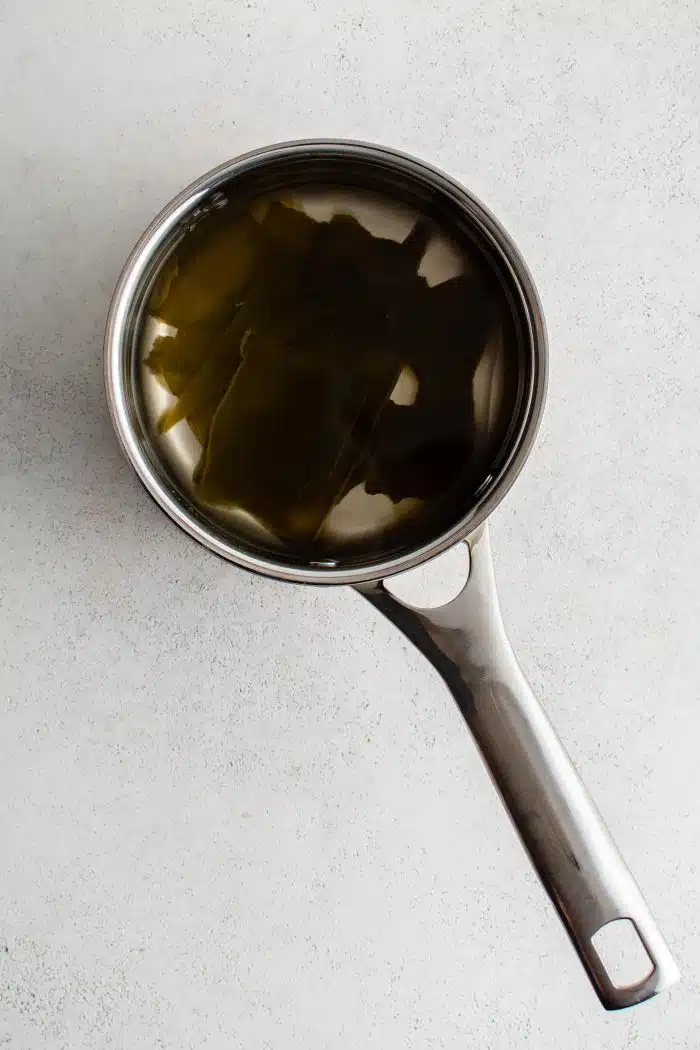
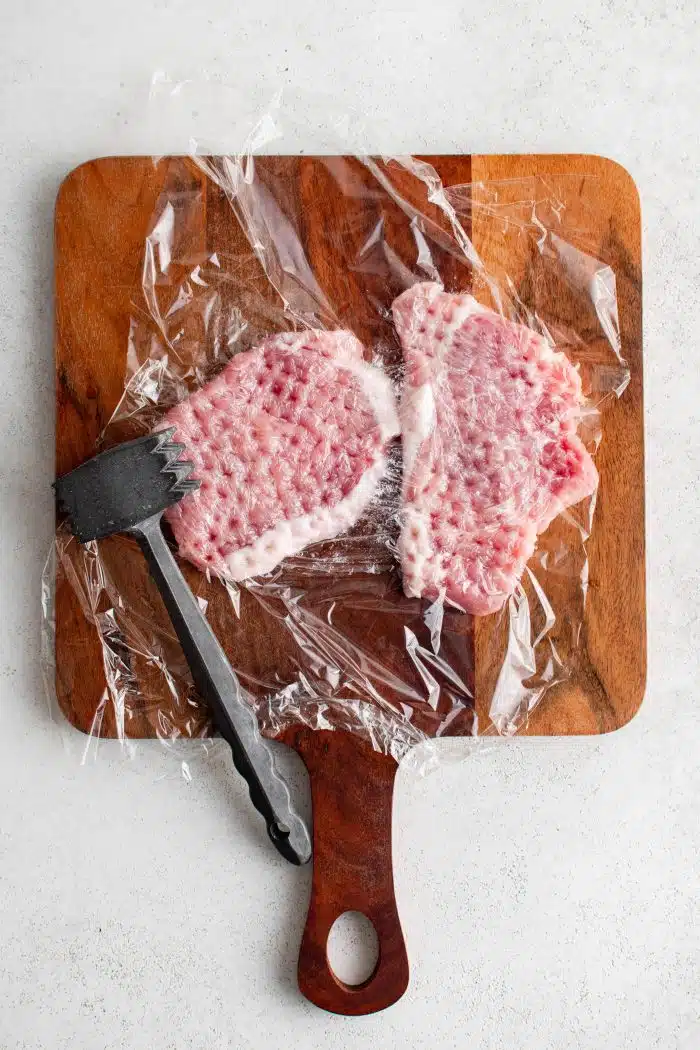
How to Make Katsudon
1. Make the dashi: Bring 2 cups of water to a boil in a small saucepan. Remove from the heat and add the kombu sheet. Allow the kombu to soak in the boiled water for at least 10 minutes – or as long as possible (the longer it sits, the more flavor will be extracted). Remove the kombu and discard. Reserve the remaining dashi broth and set aside.
2. Prepare the pork chops: Place the pork chops between 2 sheets of plastic wrap. Pound the pork chops to about 1/4-inch thickness, then set them aside.
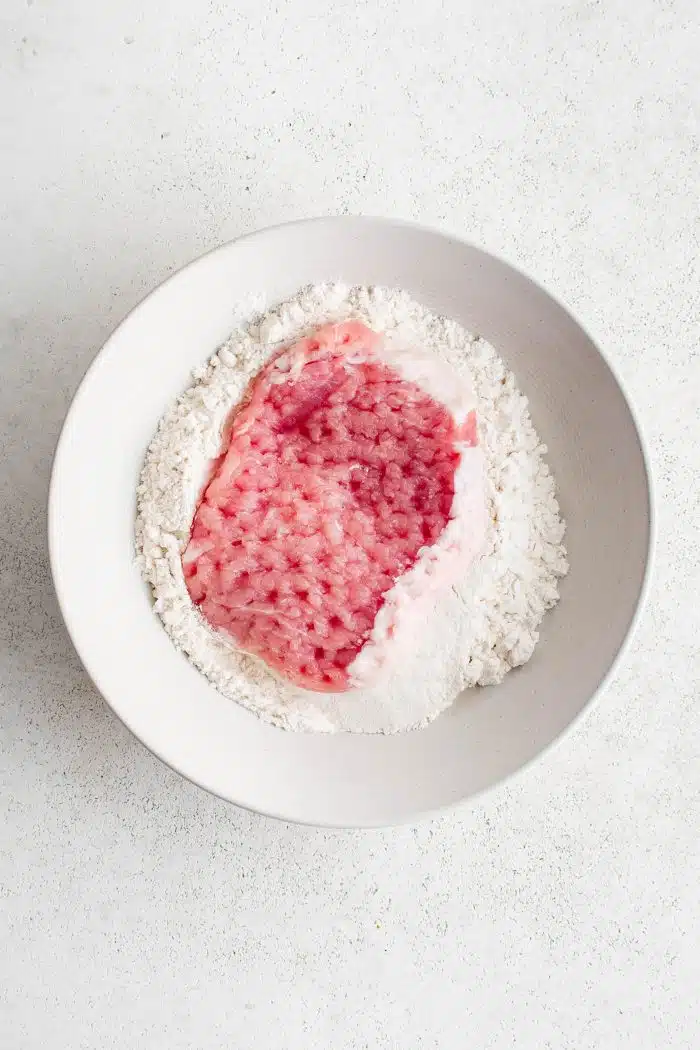
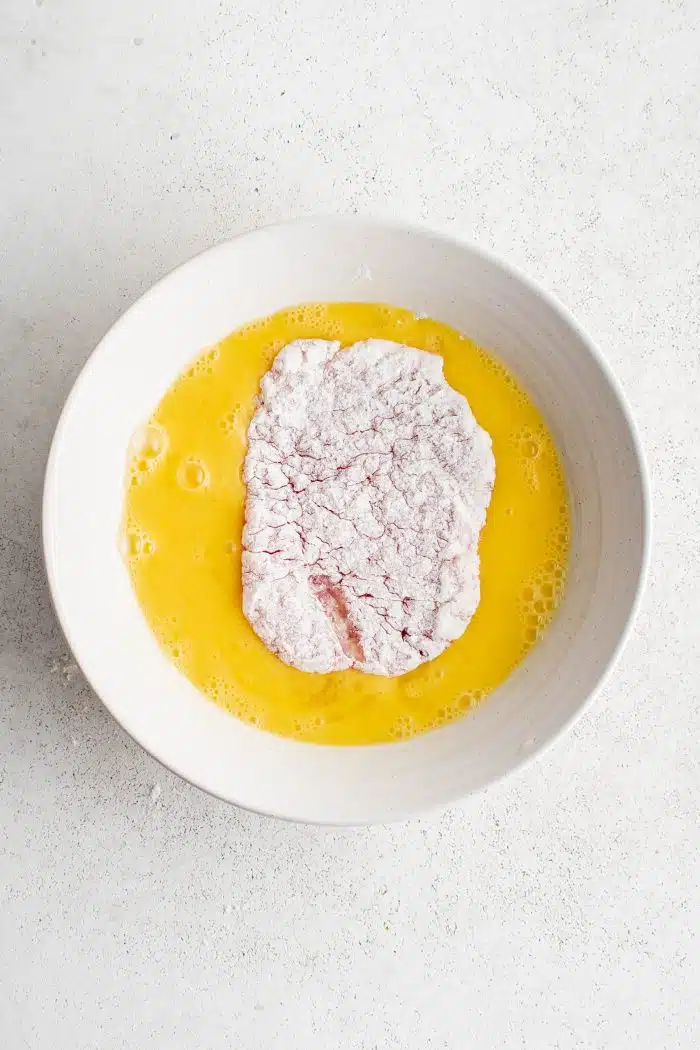

3. Prepare the dredging stations: Gather three shallow bowls. Add the all-purpose flour to the first bowl; beat four large eggs in the second bowl; and combine the panko breadcrumbs with salt and black pepper in the third bowl.
4. Dredge the pork chops: First, dip each pork cutlet in the flour, shaking off any excess, then coat the cutlets in the whisked egg. Finally, coat them with the panko mixture, pressing on as much as possible.
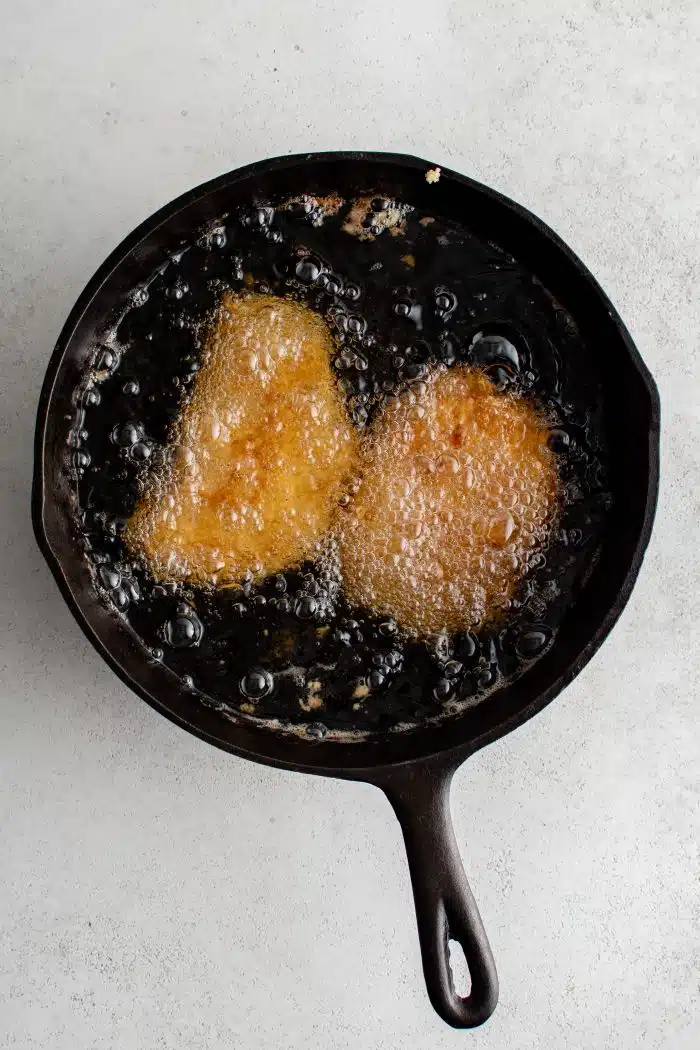
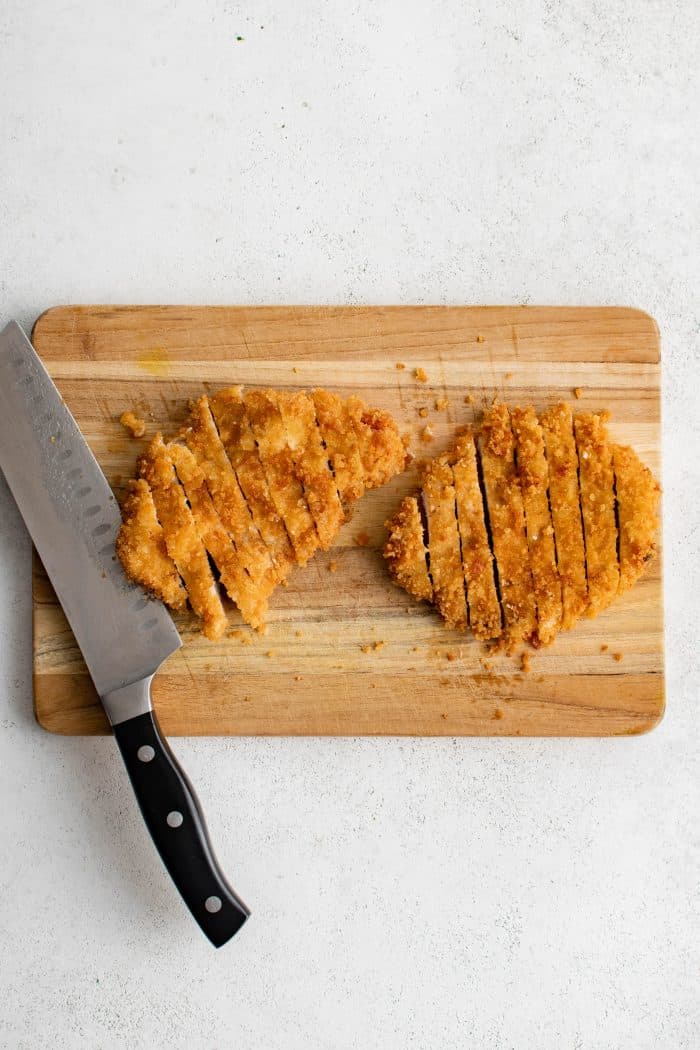
5. Fry the pork cutlets: Heat 3 inches of vegetable oil in a deep-frying skillet until it reaches 350-375℉. Once the oil is hot, add the breaded pork cutlets and cook until golden brown on each side and the internal temperature registers 145℉, about 3-4 minutes per side. Remove from the skillet and set aside.
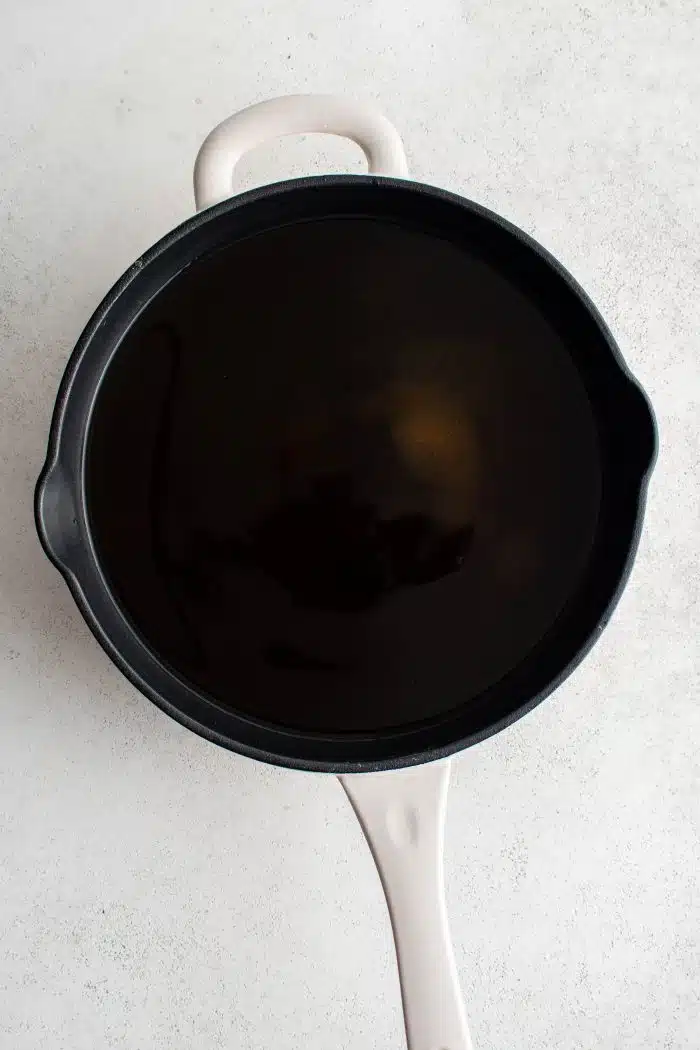
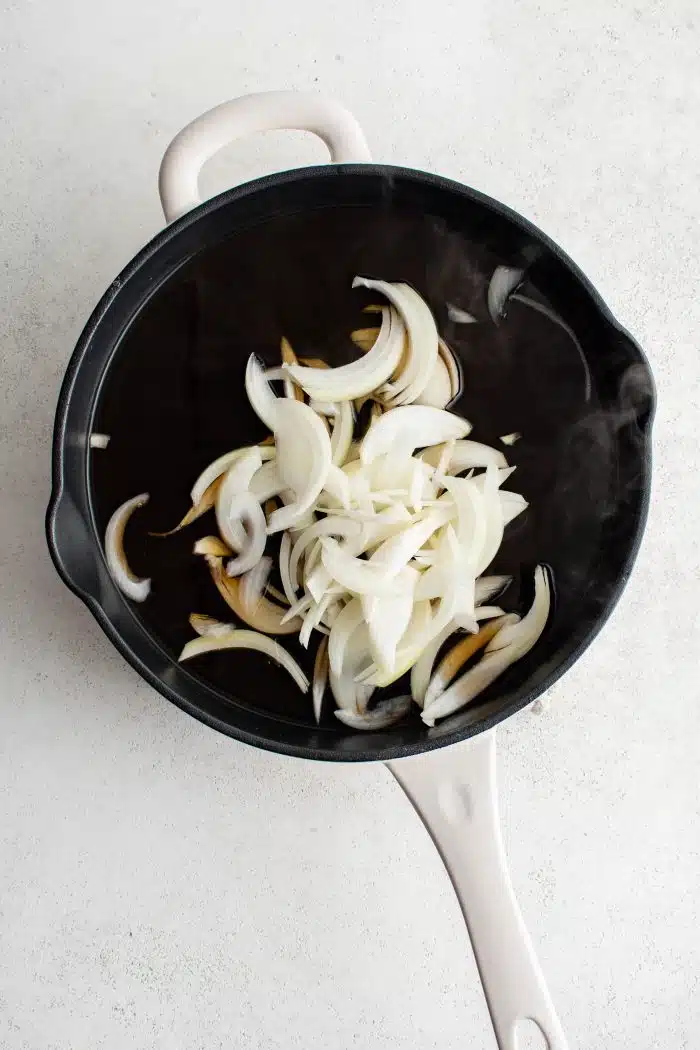
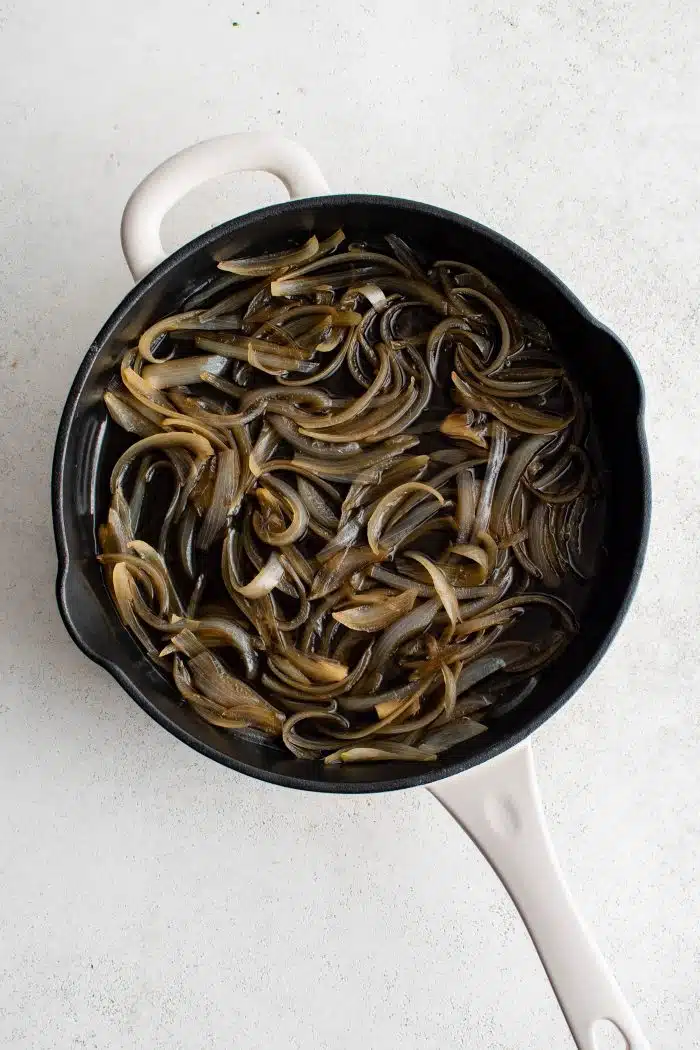
6. Combine the sauce: Add the kombu broth (aka dashi or dashi stock), soy sauce, mirin, and sugar to a large skillet set over medium heat. Stir and warm the mixture – do not boil – until the sugar has dissolved.
7. Soften the onions: Stir in the sliced onions. Slowly cook the onions until they are soft and translucent and most of the liquid has evaporated. Tip: Reduce the heat if needed to prevent the liquid from evaporating too quickly, or cover the skillet with a lid.
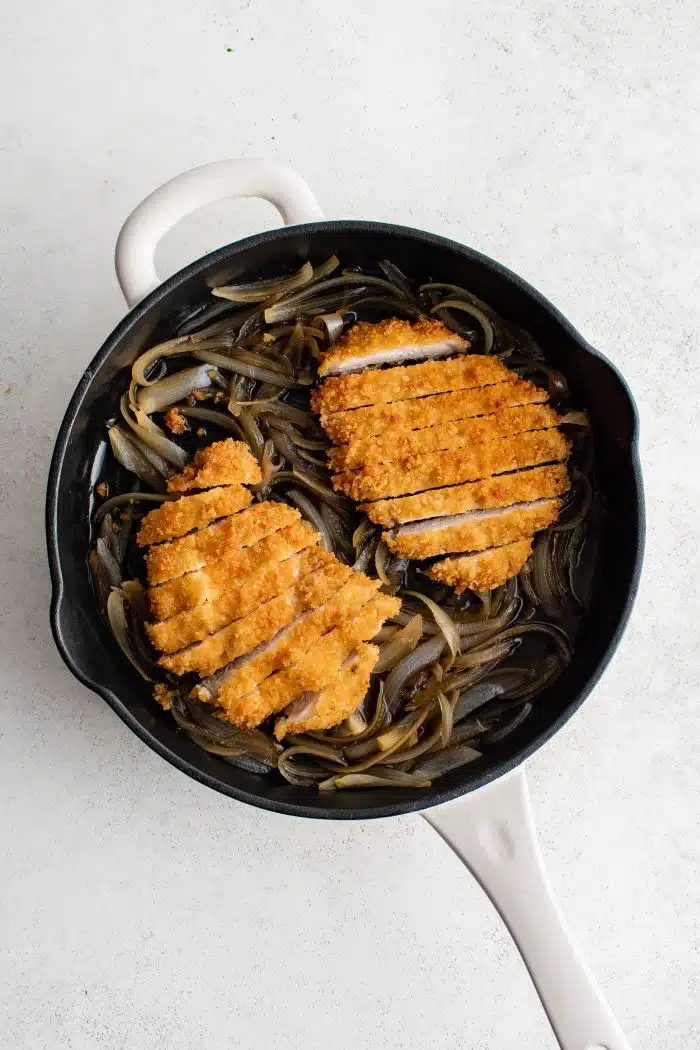
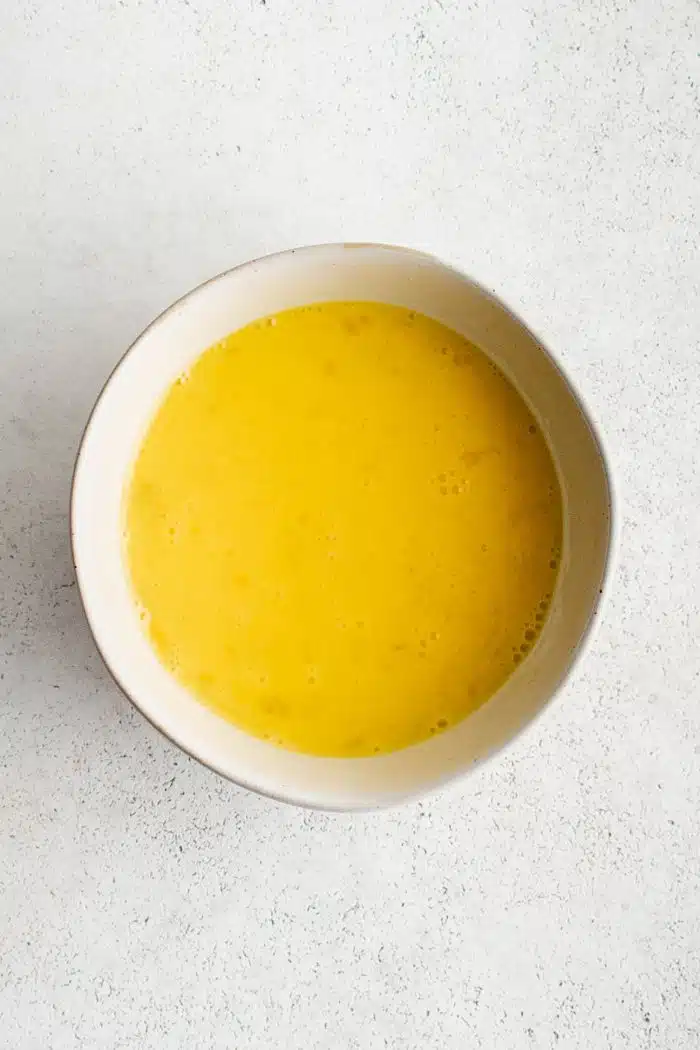
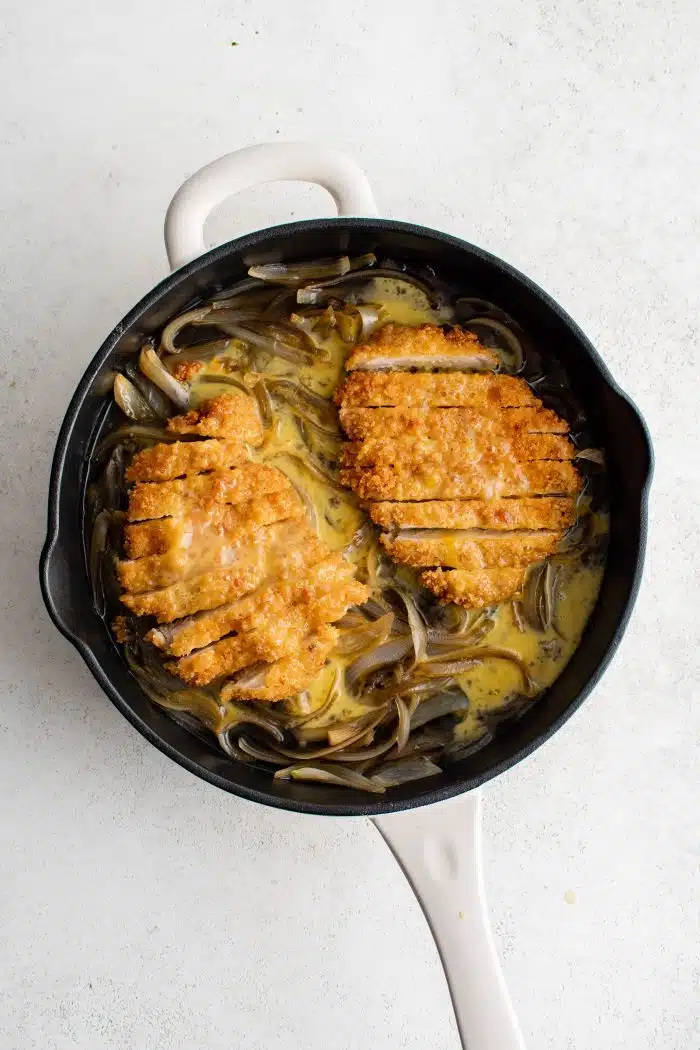
8. Add the egg: Whisk the remaining two eggs in a small bowl. Once the sliced onions are cooked, place the fried pork cutlet directly on top of the onions and pour the egg over the top so that it drips over into the onion and sauce mixture.
9. Cover and cook: Continue to cook for an additional 4-5 minutes or until the eggs are cooked through. Serve on top of a bowl of rice and garnish with sliced green onions, if desired.
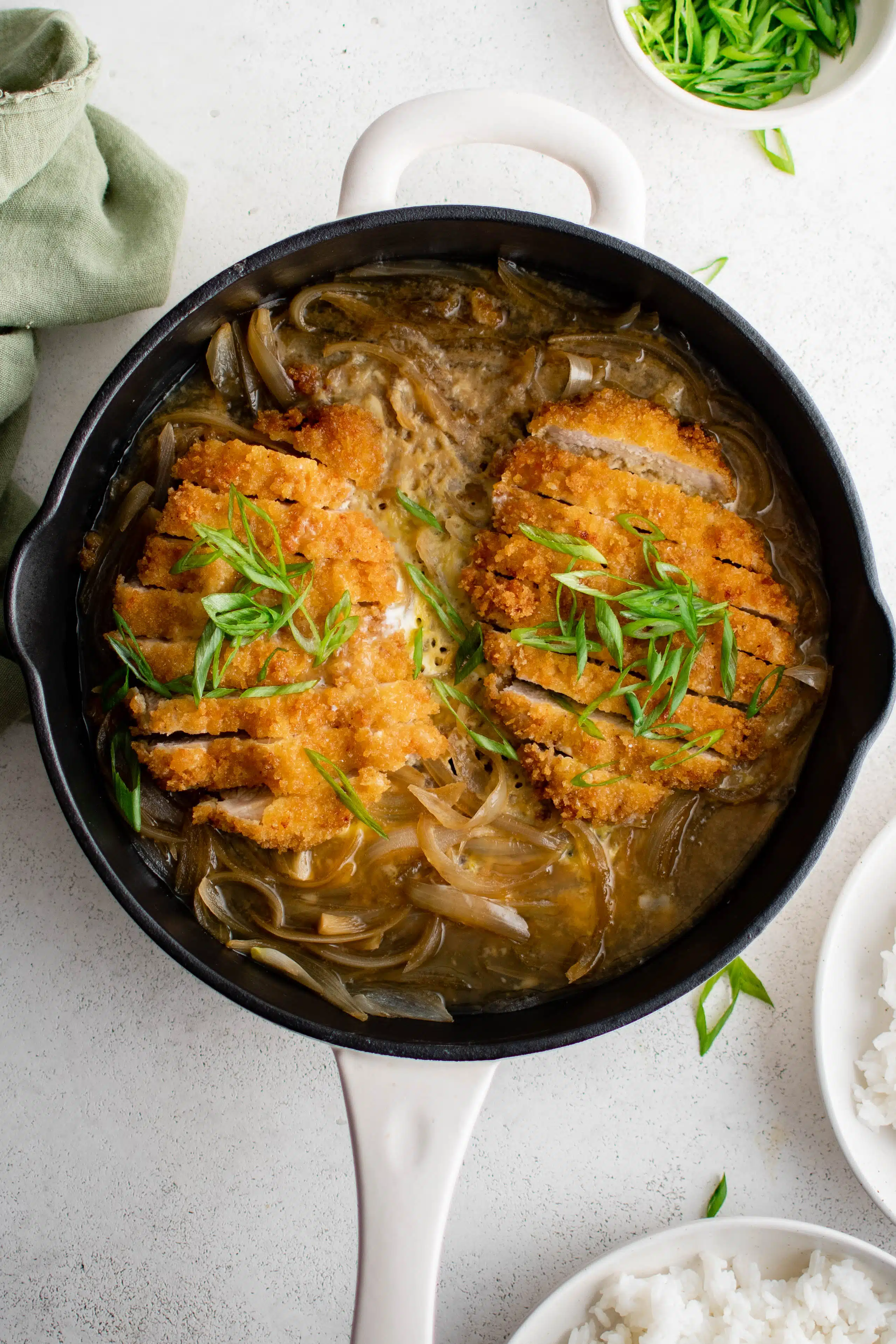
Is Katsudon Crispy?
Katsudon itself is not entirely crispy due to the sauce and the way it’s prepared – however, its main component, the tonkatsu (breaded pork cutlet), is crispy when it’s first made. It’s not until the tonkatsu is placed in the mixture of simmering onions, sauce, and eggs that it absorbs some of the liquid and becomes softer.
If you love a little crispiness, you can serve the tonkatsu on the side and pour the sauce, onions, and eggs over the rice in a separate bowl. Traditionally, however, katsudon has the tonkatsu immersed in the sauce, which gives it a softer texture.
What is the Difference Between Tonkatsu and Katsudon?
Katsudon and Tonkatsu are popular – and very similar – Japanese dishes that both feature “katsu,” breaded, deep-fried pork cutlet. How they differ, however, is in the manner in which they are served and what accompanies them.
- Katsudon: The pork cutlet is integrated into a flavorful rice bowl dish. The pork cutlet is usually simmered with sautéed onions in a mixture of dashi, soy sauce, mirin, and sugar. A beaten egg is sometimes poured over the pork and onions, creating a soft, custardy layer once cooked.
- Tonkatsu: With this dish, the emphasis is on the cutlet itself with the accompaniments on the side. It is usually served on a plate as a standalone dish, with sides such as shredded cabbage, rice, and miso soup.
What Do You Serve with Katsudon?
Hearty, rich, and comforting – Katsudon is the soul food version of Japanese cuisine. Since it’s such a filling dish, I recommend serving it with a lighter side like edamame or a small mixed green salad with Japanese sesame ginger dressing or Japanese ginger salad dressing.
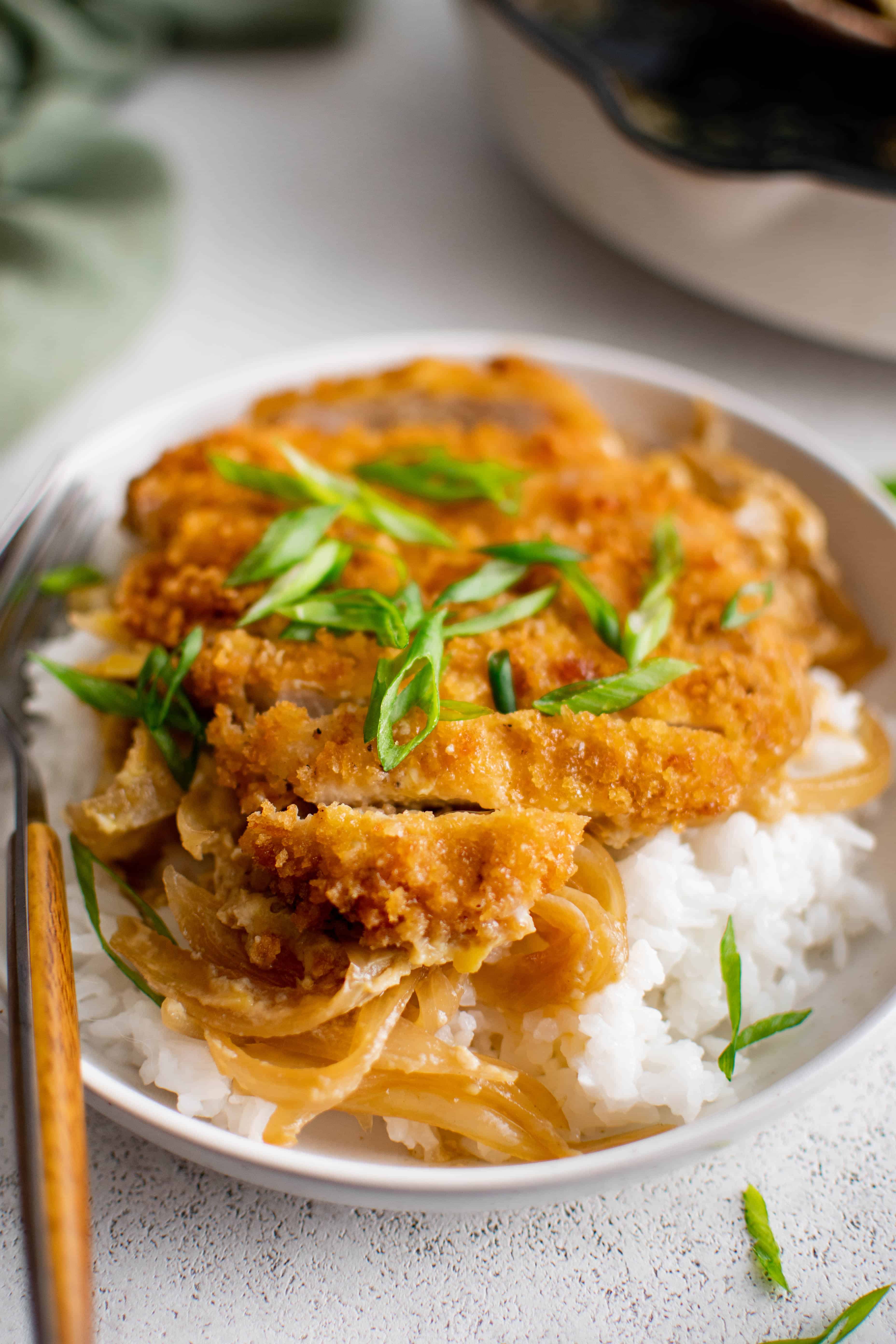
Storage and Freezing
Please note – Katsudon tastes best the day that it’s made.
Storing: If possible, store the tonkatsu (breaded pork cutlet) separately from the rice and the sauce. Consider placing a paper towel at the bottom of the container containing the breaded pork cutlets to absorb any excess oil. Allow leftovers to cool to room temperature before transferring to an airtight container—place in the refrigerator for up to 3 days.
Reheating:
- Tonkatsu: Reheat in the oven at 375°F until it’s heated through, usually about 10 minutes. Alternatively, you can use a skillet over medium heat, but the oven method is preferable for even heating.
- Rice and Sauce: Reheat them in the microwave or in a large skillet over medium heat until warmed.
More Pork Recipes
- Smothered Pork Chops Recipe
- Carnitas Recipe (Mexican Slow Cooker Pulled Pork)
- Jägerschnitzel (Pork Schnitzel & Mushroom Gravy)
- Gyoza (Japanese Potstickers)
- Chashu Pork
- Egg Roll in a Bowl
If you try making this Katsudon Recipe, please leave me a comment and let me know! I always love to hear your thoughts.
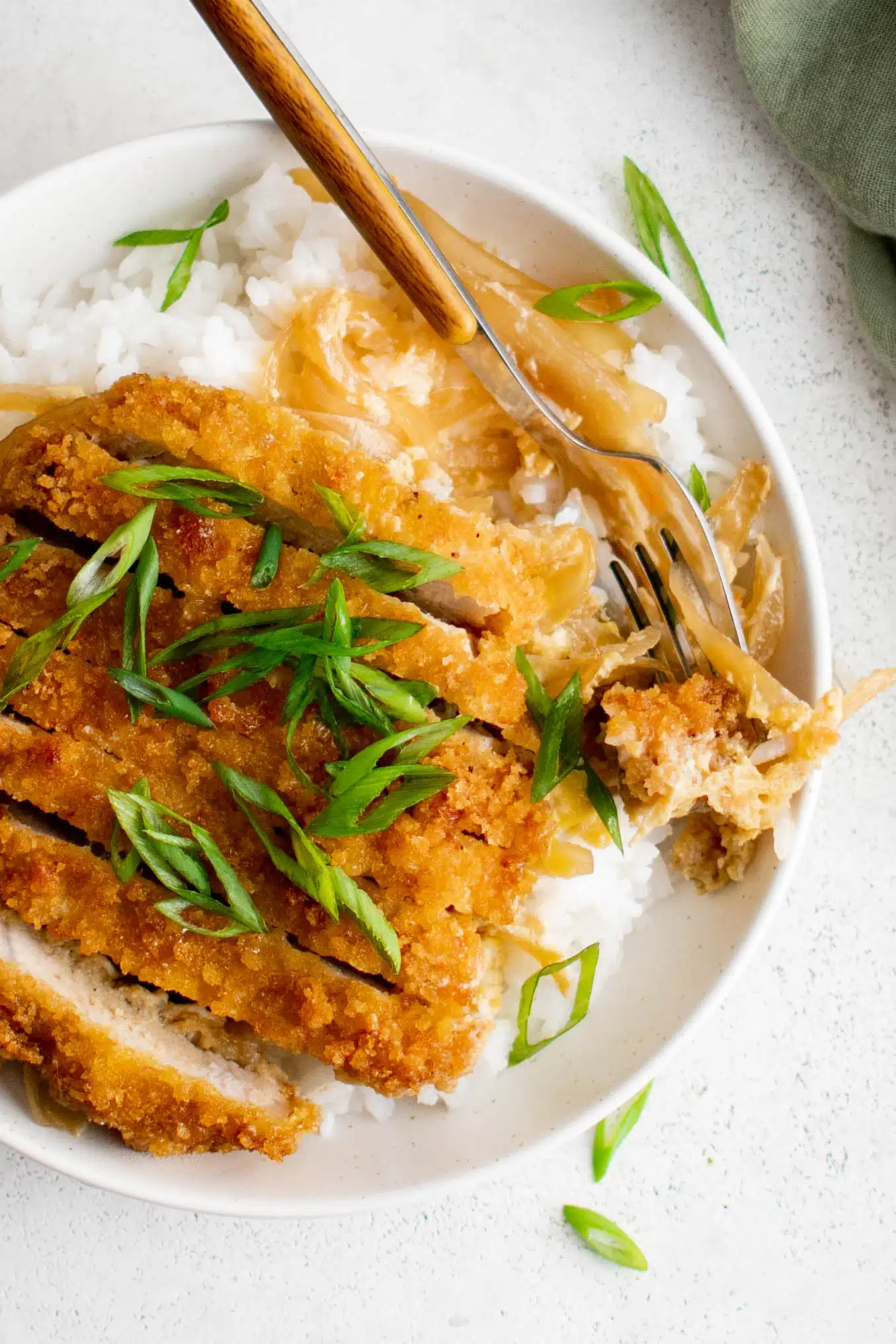

Katsudon Recipe (Japanese Pork Cutlet Rice Bowl)
Ingredients
- 1 sheet kombu
- 2 boneless pork chops, pounded to about ¼-inch thick
- 1 cup all-purpose flour
- 6 large eggs, divided
- 1½ cups Panko breadcrumbs
- ½ teaspoon Ground black pepper
- ½ teaspoon salt
- Vegetable oil for frying
- 2 tablespoon soy sauce
- 1 tablespoon mirin
- 1 tablespoon sake
- 1 tablespoon granulated sugar
- 1 large yellow onion, sliced
- sliced green onions, to garnish, optional
Instructions
- Bring 2 cups of water to a boil in a small saucepan. Remove from the heat and add the kombu sheet. Allow the kombu to soak in the boiled water for at least 10 minutes – or as long as possible (the longer it sits, the more flavor will be extracted from the kombu.)
- Remove the kombu from the water and discard. Reserve the water and set aside.
- Place the pork chops between 2 sheets of plastic wrap on a large cutting board. Pound the pork chops with a meat mallet to about 1/4-inch thickness, then set them aside.
- Prepare the dredging station using three shallow bowls. Add the all-purpose flour to the first bowl; beat four large eggs in the second bowl; and combine the panko breadcrumbs with salt and black pepper in the third bowl.
- Dip each pork cutlet in the flour, first, shaking off any excess, then, coat the cutlets in the whisked egg. Finally, coat them with the panko mixture, pressing on as much as possible.
- Heat 3 inches of vegetable oil in a deep-frying skillet until it reaches 350-375℉. Once the oil is hot, add the breaded pork cutlets and cook until golden brown on each side, about 3-4 minutes per side. Remove from the skillet and set aside.
- Add the kombu broth (aka dashi or dashi stock), soy sauce, mirin, and sugar to a large skillet set over medium heat. Stir and warm the mixture until the sugar has dissolved.
- Once the sugar has dissolved, stir in the sliced onions. Slowly cook the onions until they are soft, translucent, and most of the liquid has evaporated (reduce the head if needed to prevent the liquid from evaporating too quickly or cover the skillet with a lid).
- Meanwhile, slice the tonkatsu (the fried pork cutlet) into thin strips and whisk the remaining two eggs in a small bowl.
- Once the sliced onions are cooked, place the sliced tonkatsu in the skillet directly on top of the onions. Pour the eggs directly over the sliced pork cutlet and the onions.
- Cover the skillet with a lid and cook for 4-5 minutes or until the eggs are cooked through. Serve on top of cooked white rice and garnish with sliced green onions if desired.
Notes
- Please note – The nutritional information does not include the vegetable oil required to deep-fry the pork cutlets.
- Pork should be cooked to an internal temperature of 145 degree F as measured by a digital meat thermometer.
- Leftovers: Katsudon can be stored in an airtight container in the fridge for up to 2 days. Katsudon tastes best the same day that it is made as it will get more and more soggy the longer it sits in the sauce. If that doesn’t bother you, reheat in a 370-degree F air fryer for 4-6 minutes or in a 375-degree F oven for 8-10 minutes.
Nutrition
Nutrition information is automatically calculated, so should only be used as an approximation.
